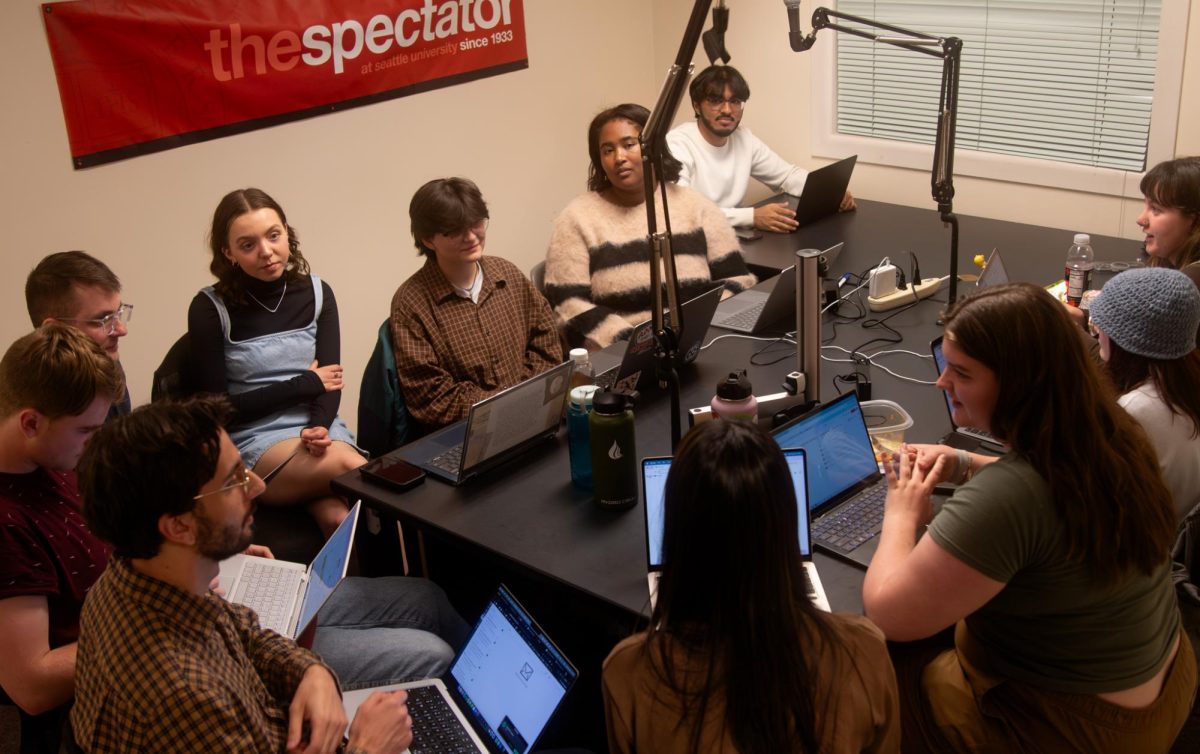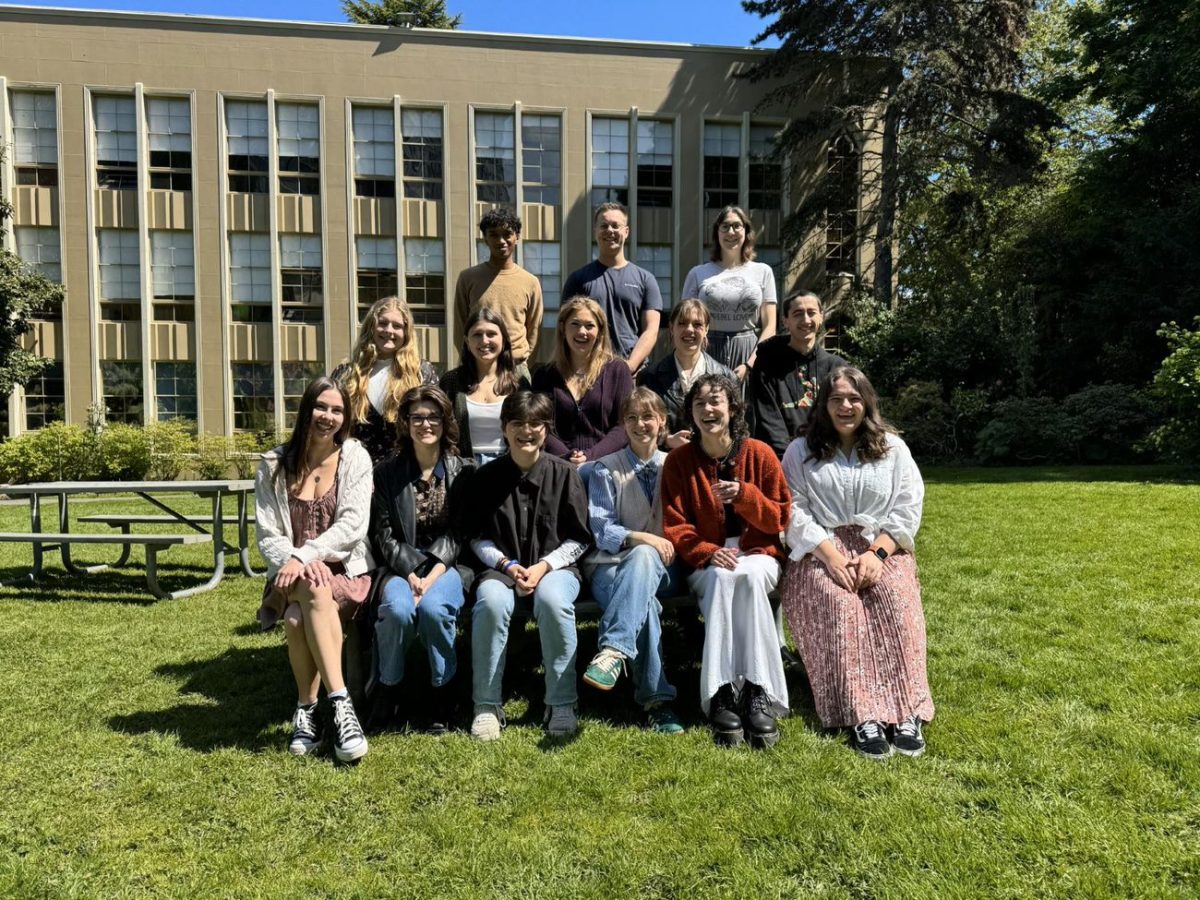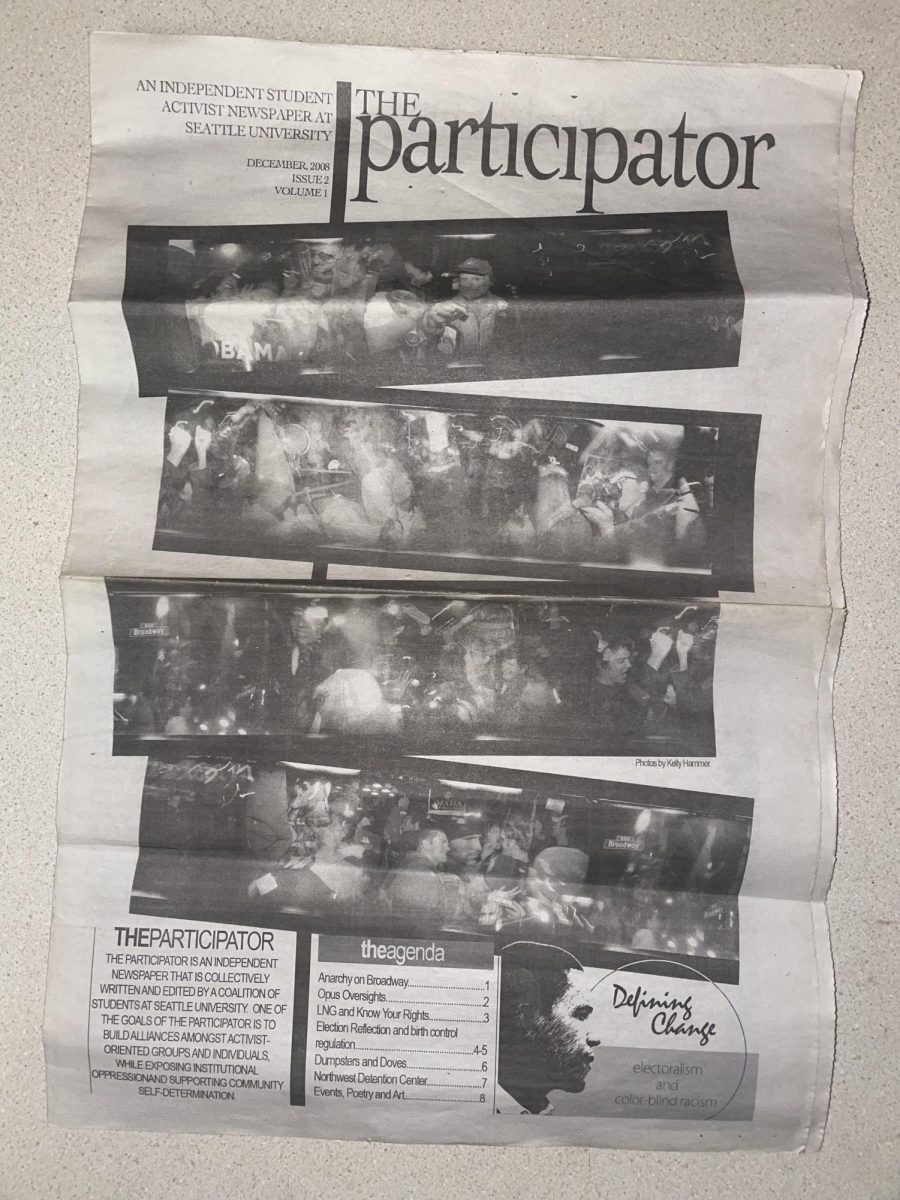Spring is prime time, at least for me, to practice mindfulness—as in psychotherapeutic mindfulness. I often walk my dog around campus on what I call a “flower walk” wherein I observe and describe to myself all of the flowers that I see.
A few weeks ago, when it was suspiciously hot for early May, I noticed that a lot of my favorite flowering bushes on campus, alstroemeria (also known as “The Peruvian Lily”), had withered in some sections before they even had a chance to bloom. It got me thinking: What impact is climate change having on our own backyard?
Assistant Professor of Biology Michael Zanis said that assessing the degree to which climate change specifically is impacting the Seattle University campus is a complex issue.
“It’s a little bit more complicated here…because we get urban heat from the buildings or sunlight [throughout] the day, creating a pretty substantial temperature shift… it can be a compounding factor between the increasing temperature and the urbanization of our environment,” Zanis said.
Zanis points to early blooming as his favorite phenomenon off of which to base theories of change. In “Plant Systemics,” he and his students observed many instances of early blooming in our flowering plants on campus. While this may seem like a positive factor, Zanis said it can actually disrupt plants’ biological clocks.
He explained that behavior is influenced by tiny environmental cues, such as temperature, light and water. Thus, when the seasons have multiple instances of extreme weather, such as heat spikes in the middle of January, there’s the risk of some plants or their pollinators getting cues at the wrong times, which can be detrimental to the blooming and pollination processes.
In “Plant Systemics,” students also conduct what Dr. Zanis calls “a bee survey,” or a health assessment of our bumble bees. The results have been promising, although Zanis qualifies that they have only been doing the lab for two years.
“Bumblebees here are actually a fairly healthy population,” he said.
The Seattle U grounds and landscaping team are also doing their part to support biodiversity and the health of the campus flora and fauna.
Student gardeners alone attend to a vast amount of weeding, cleaning up beds, raking and pruning tasks to maintain the day-to-day health and aesthetic appeal of the plants. But it hasn’t always been easy, for the plants or for their caretakers.
“It definitely appears that the plants have gotten harder to take care of,” student gardener Brett Riley said.
Seasons here, he explains, tend to have shorter and dysregulated prime periods. A plant that blooms early, for instance, can surprise gardeners and demand last-minute alterations to care schedules.
Keeping up with the health of our foliage is especially difficult at the end of the quarter when student gardeners, like most college students, are usually at their most stretched for time; the work-shortage is seemingly accentuated by the effects of climate change and urbanization.
As for what students can do to help, Zanis launched into a lively description of a phenomenon called “plant blindness,” a studied pattern that dissects “the idea that we take plants for granted… like we just walk by them as if they’re just structures in our environment, but we don’t recognize them.”
Battling plant blindness, Zanis suggested, could be one of the first steps to improving people’s relationships with their natural environment, and thus increasing the amount of care they invest in it.
“One of the challenges around it is just getting people to know what they’re looking at,” Zanis said. “Trying to get students to realize what biodiversity does for us…would be a major goal.”
Riley offered a very similar answer when asked the same question.
“Students can just watch their feet,” he said. Riley then echoed Zanis’ suggestion of learning more about the plants around campus—essentially, working through plant blindness, and attending to the impacts that plants have on humans and that they have on plants.
In addition, Riley listed off a plethora of resources and events.
“Our campus has all sorts of natural features that few people know about,” Riley said. For example, Seattle U has a number of rain gardens on campus—gardens that collect rain runoff through their soil and protect storm drains from overflowing.
Secondly, Seattle U has a lot of fruits and vegetables on campus that are free for anyone to pick and safe to eat. Given the economic hardships that some members of our community face, not to mention, as Riley adds, a general deficit of vegetables in students’ diets, the edible campus initiative is great project to get involved in for free, fresh food and a greater connection to where that food comes from.
Lastly, Riley’s co-worker, Integrated Pest Management Specialist at Seattle U Janice Murphy, leads campus nature tours by schedule—a plant-tastic opportunity to connect with biodiversity on campus and to find a stake in its preservation.
The editor may be reached at
[email protected]











